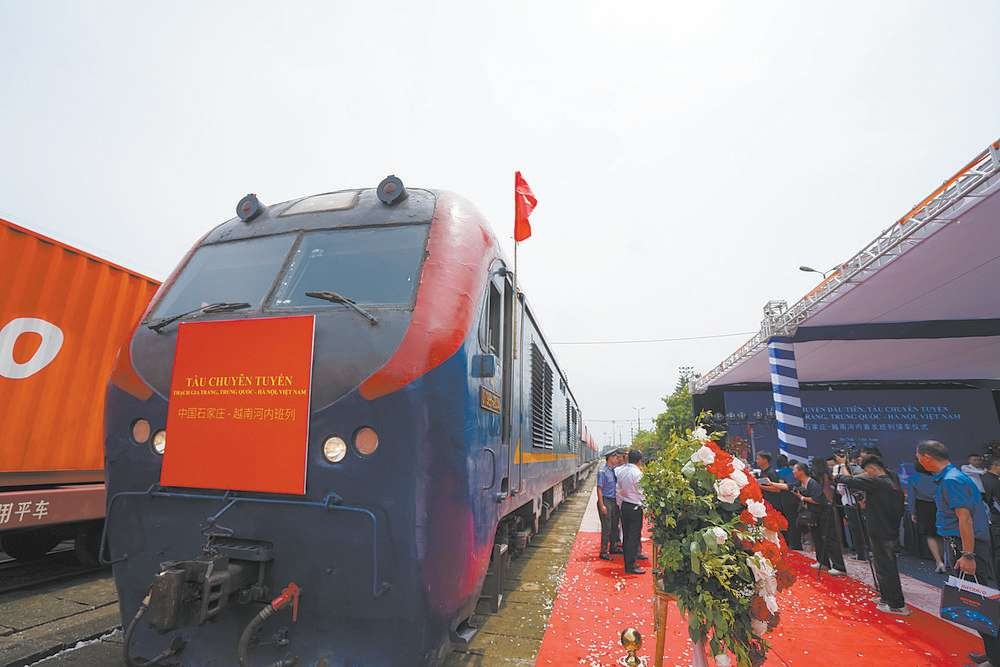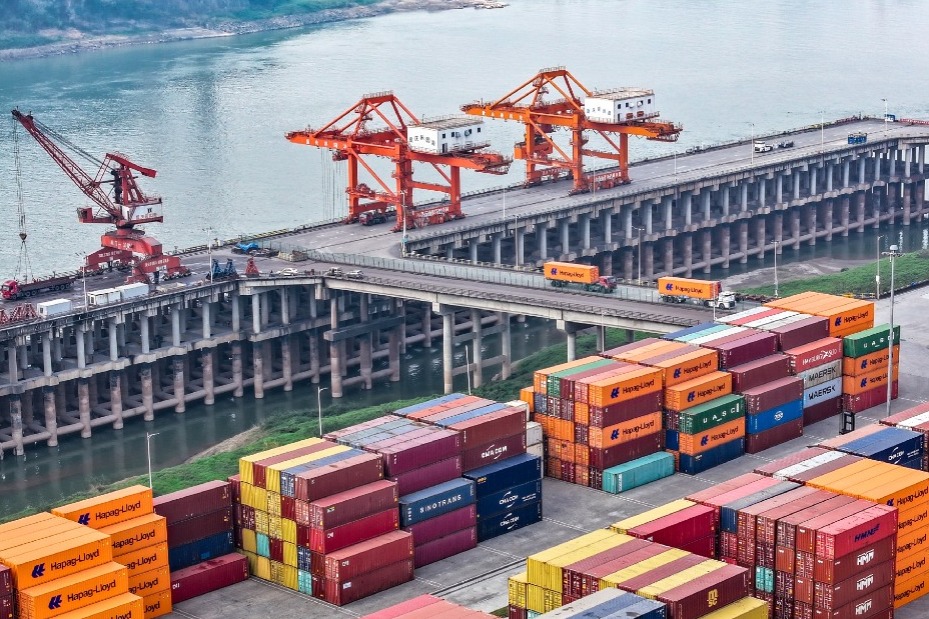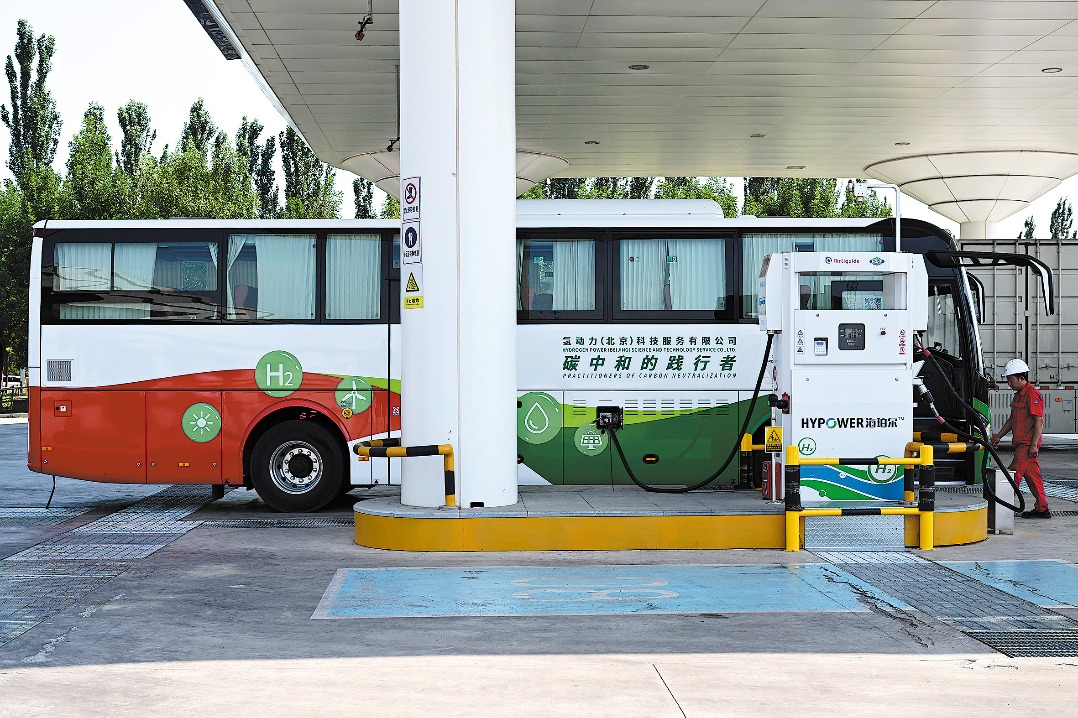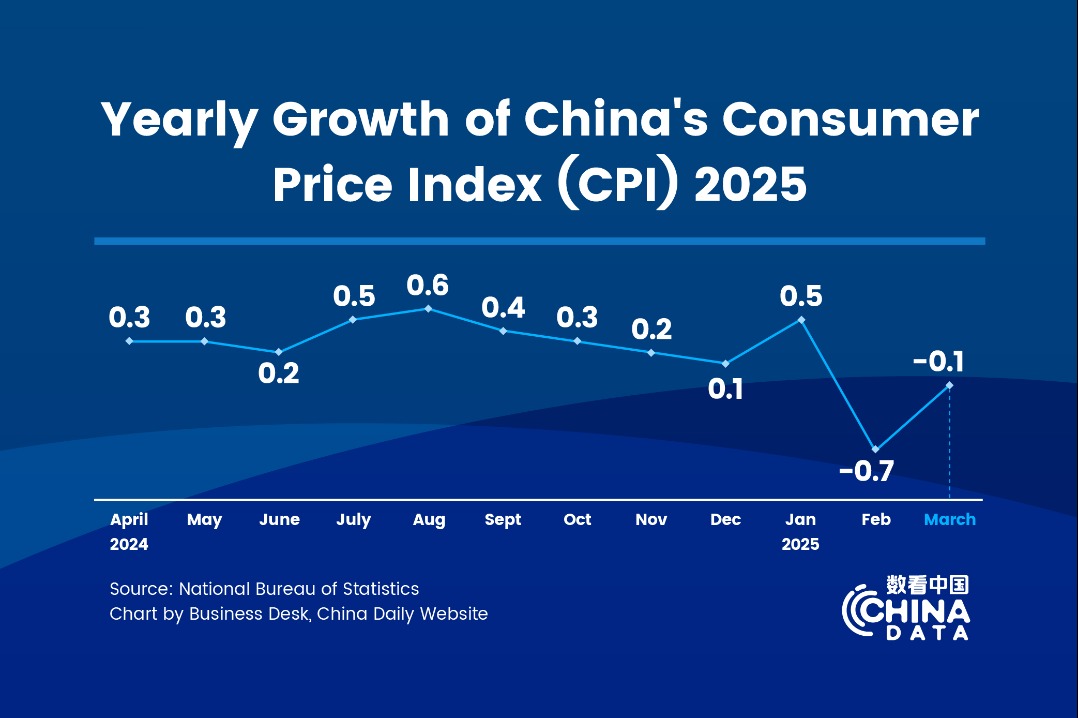Rail freight from Hebei makes way to Hanoi


Hebei province is strengthening its role as a logistics hub for China-ASEAN trade, with the launch of an upgraded rail freight route aimed at streamlining cargo movement and cutting supply chain costs.
A freight train carrying castings, fasteners and grease products departed from Caozhuangzhen Freight Station in Handan on March 5, marking the official opening of a direct rail route linking to Vietnam. The route runs along the Hanhuang (Handan-Huanghua) Railway and connects the Beijing-Tianjin-Hebei region to Hanoi, the Vietnamese capital.
The service, as the province's first direct freight link to the Association of Southeast Asian Nations market this year, aims to streamline trade flows between North China and Southeast Asia while reducing logistics costs for regional businesses, according to local authorities.
"This direct route cuts transit time by one to two days, enhancing our competitive edge in Vietnam," said Gong Yanjie, general manager of Handan-based Aijia (Hebei) Supply Chain Management Co.
According to Gong, the first freight train comprised 27 containers valued at approximately $1.35 million, primarily sourced from enterprises in Handan and Xingtai, both cities in Hebei.
"While currently operating one-way, the next step is to introduce return cargo such as Vietnamese cassava starch and turmeric," Gong added.
The company, which operates within a bonded zone in Jize county, Handan, recently signed a cooperation memorandum with Vietnamese rail operators, establishing a new logistics channel and platform for Sino-Vietnamese trade.
"We will leverage the advantages of the Jize Bonded Zone and Caozhuangzhen Freight Station. Through deepening collaboration with Vietnamese customs and railway authorities, we hope to reduce logistics costs and attract regional cargo to this route," he said.
The rail upgrades align with a strong start for Beijing-Tianjin-Hebei foreign trade this year, which saw exports hit 207.05 billion yuan ($28.7 billion) in the first two months — a record high for the period, according to China Media Group.
Jize county, which sits about 400 kilometers southwest of downtown Beijing, attaches great importance to Sino-Vietnamese economic and trade cooperation.
Leveraging Caozhuangzhen Freight Station's infrastructure, the county has rolled out supportive measures to facilitate trade channels with neighboring countries and the regular operation of ASEAN-bound freight trains.
Since the launch of the "Jize-Hanoi" rail link in May last year, a total of 22 freight trains have been dispatched.
This year, through proactive coordination, the ASEAN freight train — previously rerouted through Nanning Railway Station in the Guangxi Zhuang autonomous region — now operates directly from Jize, Hebei to Hanoi, shortening the transit time.
It is expected that a regular train service to ASEAN countries will operate once a week later this year, transporting industrial products such as fasteners, rubber flooring, PVC boards and lubricants, alongside agricultural products, according to Gong.
"We will explore further measures to reduce logistics costs, optimize routes and boost efficiency, with plans to gradually increase the frequency," Gong said, adding that expansion to other countries, such as Thailand and Laos, is also under consideration.
The efforts to deepen ASEAN integration have delivered tangible results.
Customs data shows the province's total import and export value rose 5.5 percent year-on-year to a record 615 billion yuan in 2024, with trade with ASEAN climbing by 7.7 percent to 79.12 billion yuan, according to a provincial news conference in January.
Hebei's trade with Vietnam, a key ASEAN partner, surged 39.2 percent to 16.23 billion yuan last year.
The province's agricultural imports totaled 43.96 billion yuan, including 4.08 billion yuan worth of fresh durian from Vietnam and Thailand — a 76.8 percent surge.
"Our trade relations are growing closer," Wang Yulan, an official with Shijiazhuang Customs, said at the news conference.




































